A laser marking machine is a handy tool in modern manufacturing. You may find it in a wide range of applications.
In modern manufacturing, laser engraving machines are used for product marking. People also use this machine to mark logos, signage, and decorative items. Even for some DIY projects, a laser marking and engraving machine is super handy.
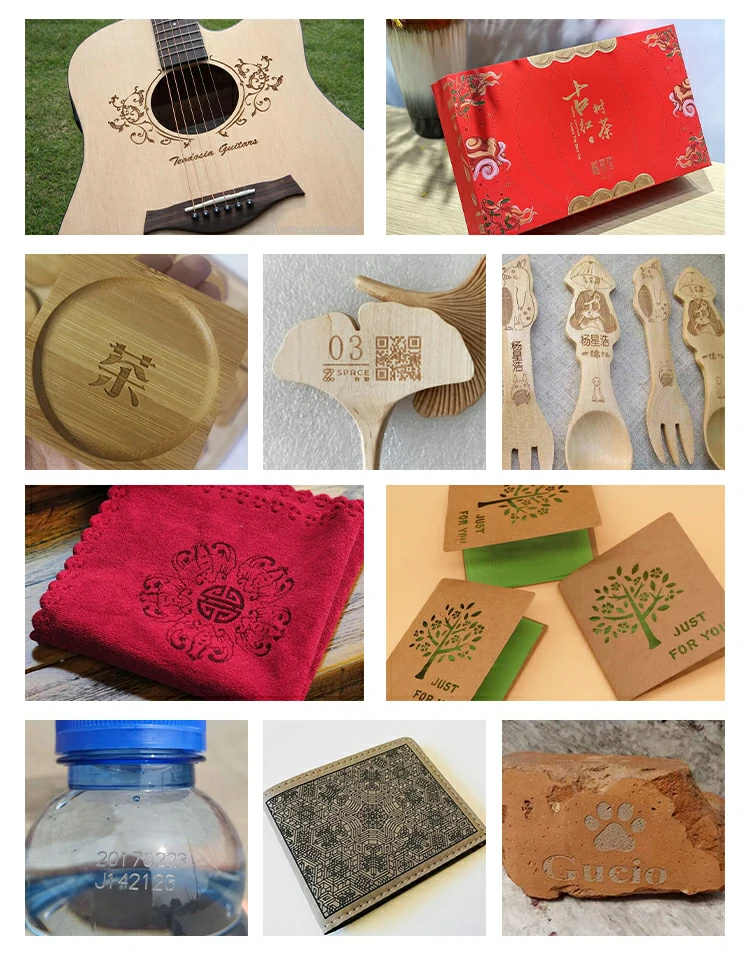
A laser marking machine can precisely engrave on various types of materials. You can even engrave high-resolution pictures on wood, plastics, or metals.
Note that the quality of the engravings generally comes from a quality laser device. So, it is crucial to choose a suitable device for your project.
10 Factors to Consider When Choosing a Laser Marking Machine
If you pick the right laser tool, you can get the best etching results and work faster. Also, a correct laser etching machine can provide versatility. You can work with all common types of materials.
Moreover, investing in a suitable laser device ensures a long-term return. Note that a reputable manufacturer is essential for this. However, the ten factors below can help you choose an appropriate laser device.
Factor 1 Laser Source
The choice of laser source is crucial in laser marking. Each laser source type has unique capabilities, making it ideal for specific uses. Understanding these differences can help you choose the suitable laser marking machine.
-
Fiber Laser Marking Machine
A fiber laser marking machine creates laser beams through optical fibers. These laser devices are suitable for marking all kinds of materials.
Fiber lasers are excellent if you are looking for a laser marking machine for metal.
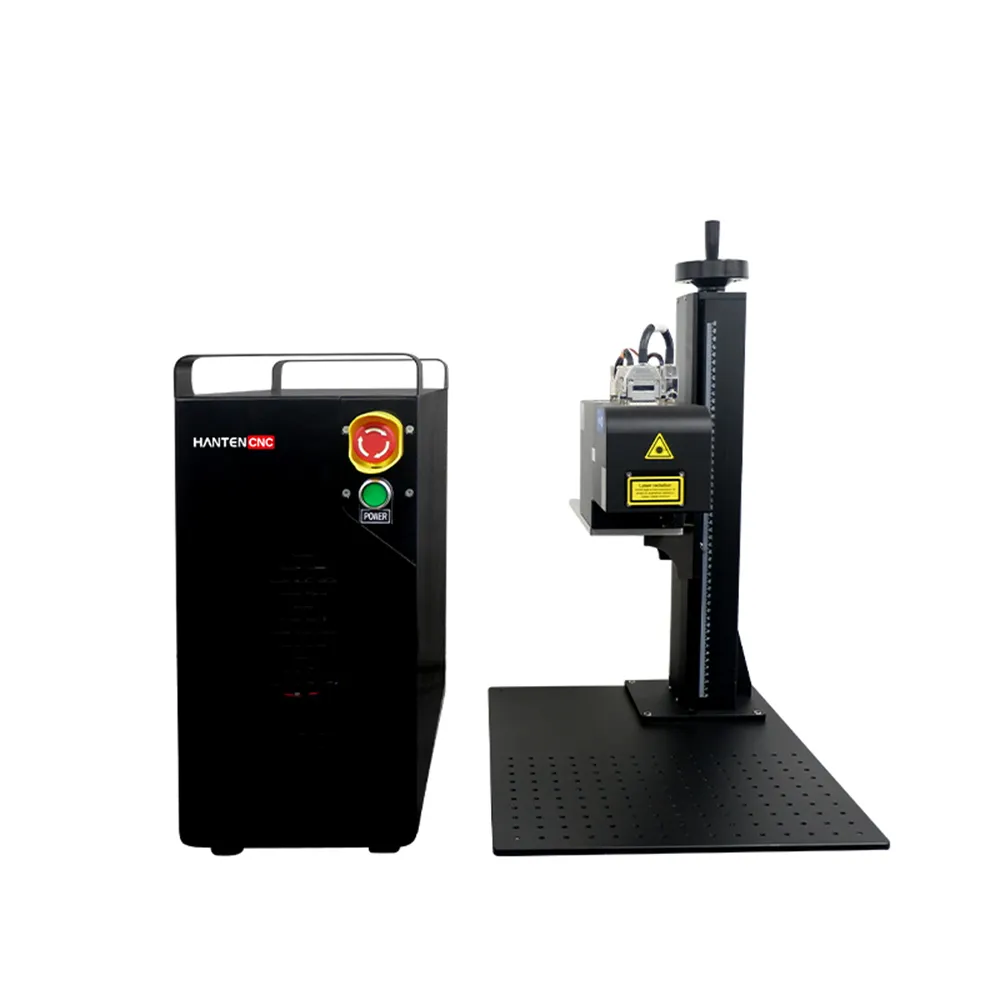
-
UV Laser Marking Machine
A UV laser marking machine uses UV laser beams for marking jobs. These laser devices are suitable for ultra-fine marking applications. Typical examples are electronics, leather, food packaging, and wires.
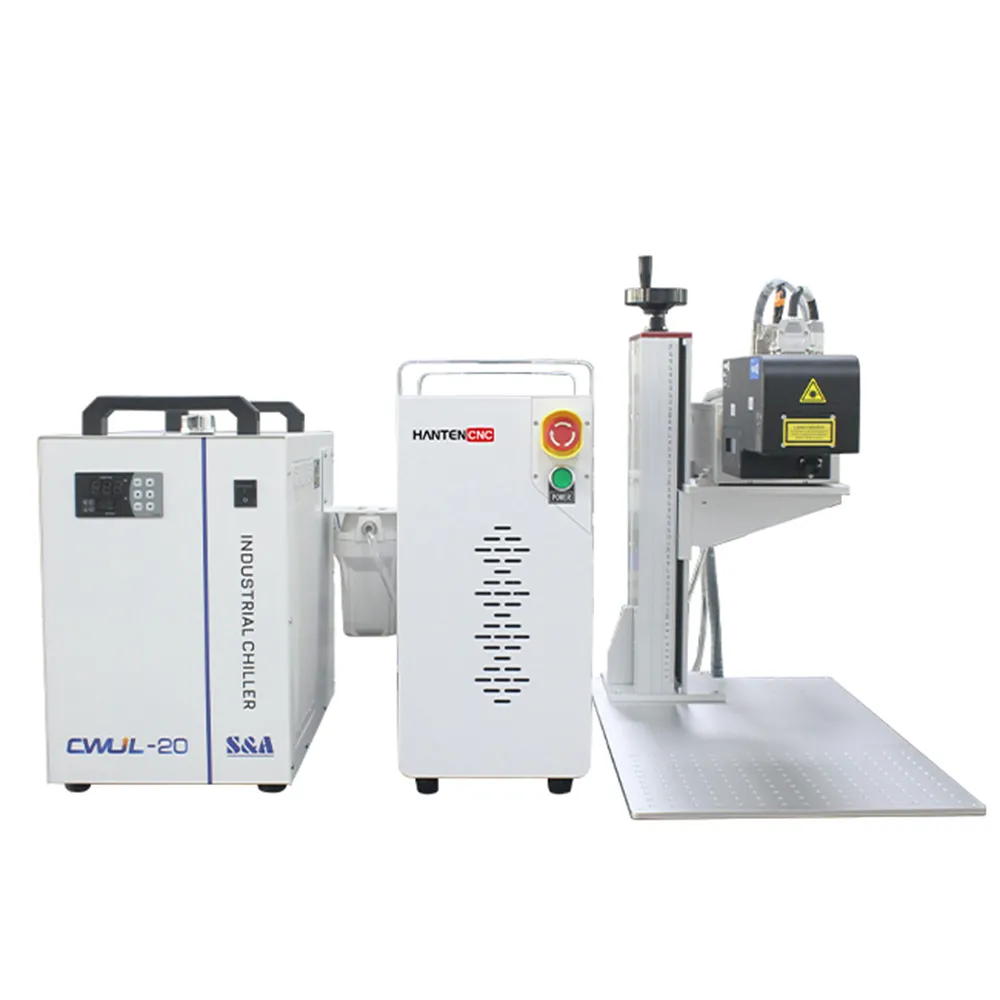
-
CO2 Laser Marking Machine
A CO2 laser marking machine employs a CO2 laser as its energy source. These laser devices are also suitable for marking various kinds of materials.
A CO2 laser is excellent if you are looking for a laser marking machine for wood. It is also suitable for marking wood, paper, leather, and fabric.
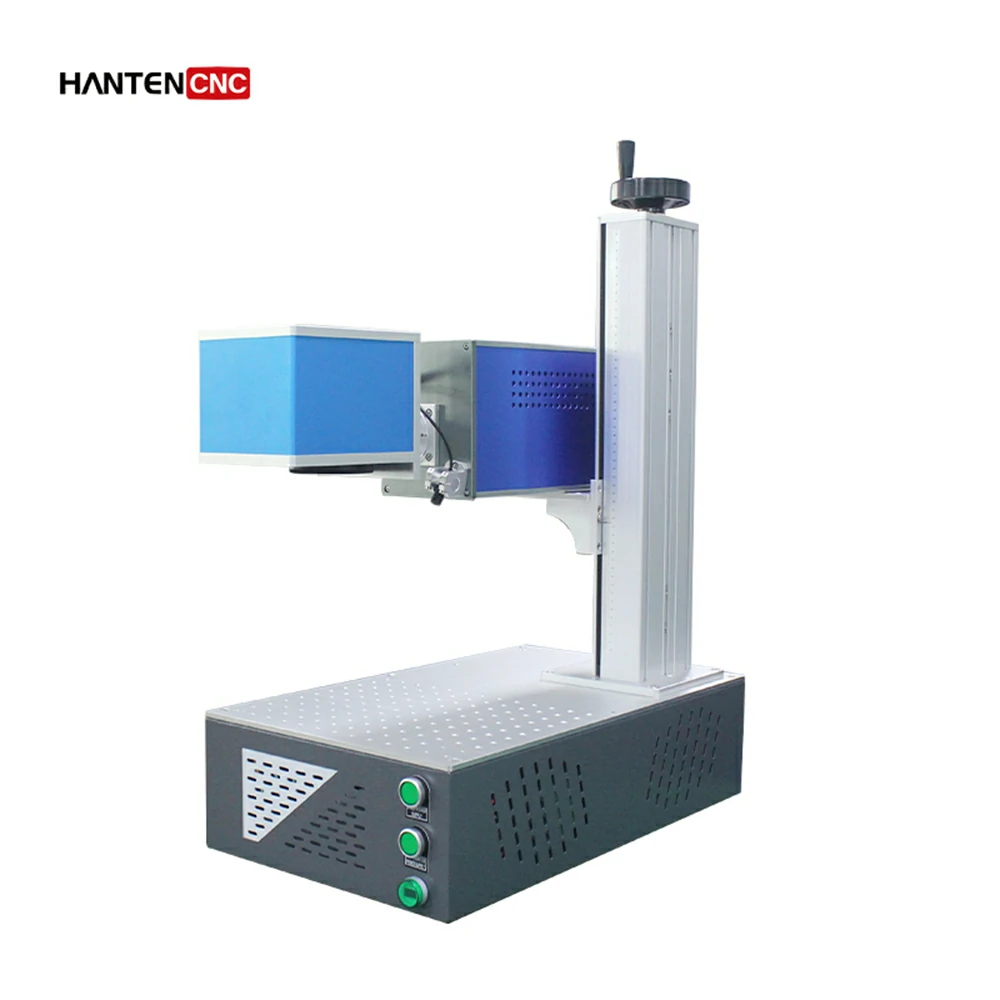
-
MOPA Laser Marking Machine
MOPA laser marking machines use MOPA technology as laser energy. These laser devices offer improved control over marking parameters.
These laser machines are perfect for color marking. They are also used for blackening, whitening, and de-layering.
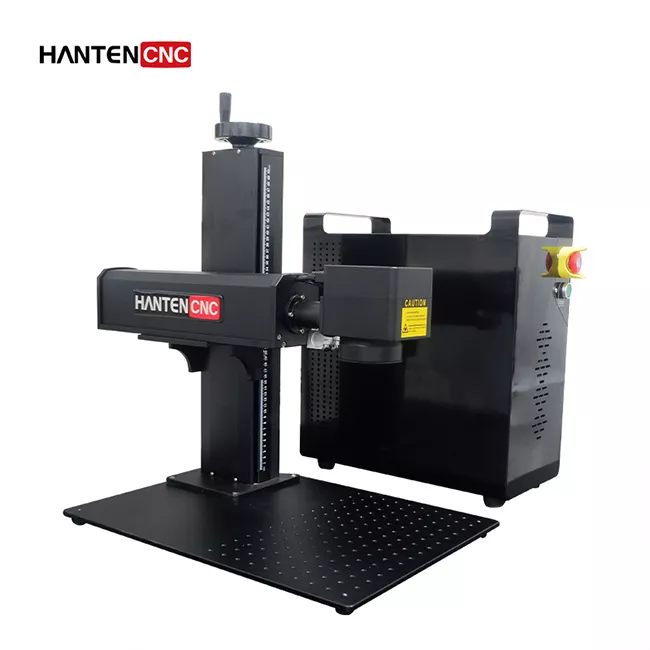
Factor 2 Marking Area
The marking area is one critical factor when choosing a laser device. It is the specific region on a material where the laser marking process occurs. A typical laser marking machine usually has a 110 mm2 to 300 mm2 marking area.
You can look at the machine’s specs to see how much the marking area is. To know the best fit, you must first evaluate your projected application.
Know the largest size of your products. Then, find the most appropriate marking area for your job.
Factor 3 Marking Speed
Another significant aspect to consider is the speed of marking. High-end and low-end types are very different. Speed has a big effect on total workflow, productivity, and efficiency.
When marking speeds are faster, the output is higher. This allows for more to be made in the same amount of time, which is especially important in fields with a high desire for goods.
The marking speed generally depends on material type and marking size. Note that laser annealing may take longer than etching. But it ensures a durable mark without surface damage.
Factor 4 Single or Multi-mode Lasers
A single-mode laser produces a beam with a single wavelength. These beams are usually very good in quality and consistency.
This usually means that you can use them for marking with great accuracy and detail. These kinds of lasers are prevalent in engraving complicated shapes. People also like to use them to mark small parts with high resolution.
On the other hand, multi-mode lasers produce more than one wavelength. They offer various marking effects.
These lasers are great for use with a unique surface texture. Color marking on different kinds of products is also common.
Factor 5 Marking Materials
Laser marking machines can be used on a wide range of materials. Metals, clay, glass, wood, leather, paper, cardboard, fabrics, and rubber are popular options.
Different types of laser sources are good for specific materials. For example, fiber lasers are excellent for marking metals. However, fiber lasers can also engrave other materials. CO2 lasers are great for wood.
UV lasers, on the other hand, are great for ultra-fine uses. They work incredibly well for wires, gadgets, leather, and food packaging. MOPA lasers offer color marking, blacking, and whitening on various materials.
Factor 6 Type of Marking
There are several ways to do laser marking, each offering unique benefits. These methods are known for their precision and effectiveness.
The laser engraving machine takes away material from the surface. It generally creates a deep and permanent mark.
Laser etching generally alters the material’s surface. It typically creates a contrast between a marked area and the surrounding surface. This method is especially renowned for marking glass.
Layer removal refers to removing one or more layers of a material. It continues to remove layers until the contrasting layer shows up. This is also called the ablation method.
Carbon migration is another popular way to use a laser to mark something. This method usually changes the color of a surface. Typical examples are producing black marks on stainless steel or titanium.
Another popular way of laser marking is laser bonding. As the name implies, this method creates a bond between the marking material and the object’s surface.
It’s now clear that different laser marking machines follow other techniques. Because of this, you need to consider the type of mark when you choose a laser marking machine.
Factor 7 Software Suitability
Software compatibility is crucial for several reasons. This ensures that the program and the machine can work together without problems. In general, it makes communication and functioning easier.
It is also crucial that the machine drivers you use are compatible with the running system on your PC. It checks whether the software can handle and manage the marking process well.
In addition, advanced software might let you change the design and parameters. It lets you handle multiple files simultaneously, making your job more productive and efficient.
As you can see, software plays a crucial role in the outcome of your laser marking jobs.
Factor 8 Maintenance & Customer Support
Buyer support is one of the most crucial things to consider.
Picture this! You need help from your laser machine maker, but you can’t reach them. Even if you manage to make contact, the communication is not clear. This can sometimes be frustrating because you may not want to pay a lot of money for some silly machine problems.
To avoid such a situation, prioritizing customer service before purchasing is essential. Considering this factor ensures that you receive timely assistance and clear communication. In case of any issues, you can then get reliable guidance.
Factor 9 Safety Considerations
There are some risks associated with using lasers. If you don’t handle them properly, laser beams can hurt your eyes, burn your skin, and even start fires. Safety is another critical consideration when picking out a laser marking machine. You can find out if the machine follows safety and legal rules in the business.
Check the device’s safety features. In this case, you can also seek professional assistance. Learn more about safety precautions during laser marking jobs.
Factor 10 Budget
When you’re setting a budget for a laser marking machine, it’s not just about the upfront cost. You’ve got to think long-term, too. Consider Total Ownership Cost (TOC) and running costs.
Indeed, the initial price tag matters, but it’s equally crucial to factor in maintenance, repairs, and consumables over time.
Investing in a higher-quality machine might mean more upfront, but it could save you money in the long run. Why? Because top-notch machines often need less maintenance and less downtime. So, while you pay more initially, you’ll likely spend less over the machine’s lifespan.
Final Thought
Let’s wrap everything up! When selecting a laser marking machine, consider the above ten factors.
Factor 1 highlights how the laser source choice influences precision and quality. However, your needs, as reflected in factor 2, should guide your choice of the marking area.
According to factor 3, the speed of marking has a direct effect on output. Factor 4, on the other hand, says that the marking job will determine whether single or multi-mode laser marking is best.
Factor 5 dictates compatibility and suitability for specific substrates. On the other hand, factor 6 shows that the type of laser project can also affect which laser device is best. Factor 7 shows how essential software is to the outcome.
Find a company you can trust. This is necessary for reliable customer service, as discussed in factor 8. Reliable customer support can help you with any issues you face.
However, factors 9 and 10 discuss the necessity of considering safety and budgets.
Overall, it’s a fantastic guide to help you choose a suitable device for your project. For more information, feel free to contact our customer support team. We have a team of professionals who are always happy to assist you.
